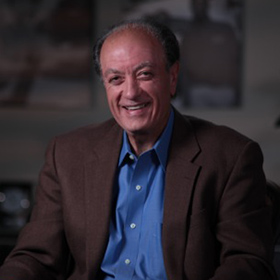 Mario Morino, who once cofounded and helped lead software firm Legent Corporation to an industry top 10, is today well known as a leader in the venture philanthropy movement and for the company he co-founded in 2000, Venture Philanthropy Partners (VPP), a philanthropic investment organization that provides both strategic funding and leadership guidance to nonprofits. Yet, it is perhaps for his speaking engagements and writing that Morino exerts his greatest influence on the nonprofit world. For example, in his groundbreaking book Leap of Reason, Morino challenges everyone involved in philanthropy: Nonprofits must (and must be empowered to) set clear goals that can be supported with rigorous measurement to determine progress. That outcomes orientation reflects the hard-won insights of Morino's philanthropic journey.
Mario Morino, who once cofounded and helped lead software firm Legent Corporation to an industry top 10, is today well known as a leader in the venture philanthropy movement and for the company he co-founded in 2000, Venture Philanthropy Partners (VPP), a philanthropic investment organization that provides both strategic funding and leadership guidance to nonprofits. Yet, it is perhaps for his speaking engagements and writing that Morino exerts his greatest influence on the nonprofit world. For example, in his groundbreaking book Leap of Reason, Morino challenges everyone involved in philanthropy: Nonprofits must (and must be empowered to) set clear goals that can be supported with rigorous measurement to determine progress. That outcomes orientation reflects the hard-won insights of Morino's philanthropic journey.In 1992, Morino retired from the private sector to devote himself to philanthropy. "When I retired, I knew I didn't know anything in the new space," he says. "I came in with some preconceptions, of course, but I wanted to simply get out, and learn from other people." To do this, Morino, along with a close friend, dedicated a year to learning about philanthropy. That year turned into a year and a half, and included face-to-face meetings with more than 700 people—everyone from college presidents to gang members—during which Morino had the invaluable experience of hearing multiple views on the same issues.
See a complete archive of Mario Morino videos.
As people increasingly opened up to Morino, he came to see that the nonprofit world was not what he had expected. Realities such as too many nonprofits competing for the same dollars created what Morino calls a dysfunctional funding system. "It didn't matter whether you were talking to a foundation program officer or an executive director, when they told you how it really worked, you knew it was really broken." Though Morino found it exhilarating to think of the good that could be achieved, the realities that kept that good from happening were deeply upsetting. "All these counterintuitive things start coming through," he says. "The bottom line is you realize the enormous talent, but [you see] a system that's in no way prepared to allow that talent to reach fulfillment—that's the disappointing part."
Morino—as is clearly reflected in his speaking engagements and writing—believes that excellence must be self-imposed and that philanthropists should prioritize helping their grantees create a culture of performance that stresses outcomes. "Managing outcomes is not a normal act today; it's not a natural act of a nonprofit organization, and I'm not saying it's a function of a nonprofit executive, it's the whole ecosystem there," says Morino. "I think the issue starts right with funders—it does take some money to help an organization build the strength of an organization."
Mario Morino's Key Messages for Philanthropists


